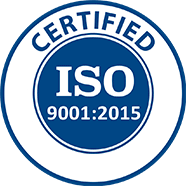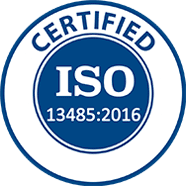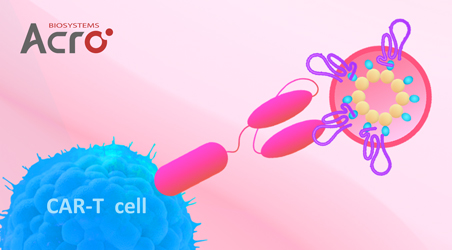B7 Homolog 4 (B7-H4)-Directed Agents in Oncology Clinical Trials: A ReviewPhipps, Falchook
J Immunother Precis Oncol (2025) 8 (2), 153-160
Abstract: B7 homolog 4 (B7-H4) is a transmembrane protein found on immune cells and is frequently overexpressed in various solid tumors, making it a promising target for cancer therapy. B7-H4-directed agents, particularly antibody-drug conjugates (ADCs) like puxitatug samrotecan (AZD8205), felmetatug vedotin (SGN-B7H4V), and GSK5733584, have demonstrated early clinical activity with promising response rates in triple-negative breast cancer (TNBC). Combination strategies, such as ADCs with anti-PD-1 or PARP inhibitor therapies, have also shown enhanced tumor regression in preclinical models and are the subject of several ongoing clinical trials. This review highlights the current landscape of B7-H4-targeted agents, their progress in clinical trials, and the potential for combination approaches to improve outcomes in B7-H4-expressing cancers.
Establishing a comprehensive panel of patient-derived xenograft models for high-grade endometrial carcinoma: molecular subtypes, genetic alterations, and therapeutic target profilingSato, Yagishita, Yoshida
et alNeoplasia (2025) 64, 101158
Abstract: High-grade endometrial cancer (EC) has a poor prognosis, but molecular classification-based treatments present new therapeutic opportunities. Antibody-drug conjugates (ADC) emerge as promising tools, yet a deeper understanding of antigen dynamics, optimal therapeutic sequencing, and resistance mechanisms is essential. This study investigates the utility of patient-derived xenograft (PDX) models for EC as preclinical platforms, evaluating molecular subtypes and the ADC targets expression of patient and PDX tumors.We developed a comprehensive panel of molecularly characterized PDX models from patients with EC representing various histological types. Molecular subtypes and gene alterations were analyzed using sequencing and immunohistochemistry. ADC targets, including human epidermal growth factor receptor 2, trophoblast cell-surface antigen 2, B7-H4, folate receptor alpha, and cadherin-6, were profiled.Thirty-one EC-PDX models were successfully established, maintaining histological fidelity and 93.1 % molecular subtype consistency with the patient tumors. Notably, 80.6 % of the PDX models exhibited high expression (2+/3+) of at least one ADC target, and 54.8 % displayed high expression of multiple targets. Remarkably, 9.7 % showed high expression of all targets, with gene mutations also characterized. Meanwhile, patient tumors, 78.8 % showed high expression (2+/3+) of at least one ADC target, and 63.6 % showed high expression of multiple targets.The molecularly classified EC-PDX panel, enriched with detailed antigen profiles and genetic data, provides a robust platform for investigating novel ADC therapies and precision treatment strategies for high-grade EC.Copyright © 2025. Published by Elsevier Inc.
Phenotypic characterization of tumor associated macrophages and circulating monocytes in patients with Urothelial carcinoma of bladderSingh, Raja, Kaushal
et alImmunol Res (2025) 73 (1), 66
Abstract: Targeting immune checkpoints has shown clinical efficacy in Urothelial carcinoma of bladder (UBC); however, a substantial percentage of patients remains unresponsive, which warrants the elucidation of novel therapeutic targets to circumvent immune suppression. Tumor associated macrophages (TAMs) are known for their indispensable role in cancer immunosuppression however, their phenotype and functionality in UBC is not yet clear.Phenotypic composition and functional markers of TAMs, and circulating monocytes were assessed in surgically resected bladder tumors and PBMC of UBC patients (n = 40). Besides, 40 healthy volunteers were recruited to draw comparisons for peripheral monocytes. Monocytes from patients were treated with autologous bladder tumor conditioned media (TCM) to assess its effects on macrophage-based markers.The infiltration of TAMs was significantly increased in bladder tumor tissue by 21.2% and which displayed both M1 and M2 phenotypic markers, wherein M2 phenotype exhibited positive correlation with disease severity. Circulating monocytes exhibited an increase in frequency of non-classical monocytes by 17.42% and elevated M2-macrophage markers by 20%. Further, TAMs and circulating monocytes exhibits an elevated expression of IL- 10 and inhibitory immune checkpoints (PD-1, PD-L1, and B7-H4). Stimulation of patient-derived monocytes with TCM further augmented the expression of immune checkpoints, and immunosuppressive markers like IL-10, TGF-β and CX3CR- 1. Lastly, M2 phenotype of TAMs and PD-L1+ and B7-H4 + TAMs displayed positive correlation with clinico-pathological parameters in UBC patients.This study presents TAMs with an immunosuppressive phenotype that correlates positively with disease severity and suggests TAMs as a potential therapeutic candidate to restore the anti-tumor immunity in UBC.© 2025. The Author(s), under exclusive licence to Springer Science+Business Media, LLC, part of Springer Nature.
Expression patterns of immune checkpoint molecules and their clinical values in gastric neuroendocrine neoplasmsLiang, Lu, Wang
et alClin Transl Gastroenterol (2025)
Abstract: Gastric neuroendocrine neoplasms (g-NENs) are a rare type of stomach tumor. However, limited data exist about the expression and clinical significance of B7 family ligands/receptors in patients with g-NENs. Thus, we conducted the present study to address this issue in a cohort of 112 patients with g-NENs.Using immunohistochemistry, we mapped and quantified the expression of the B7 family ligands/receptors molecules programmed cell death ligand 1 and 2 (PD-L1 and PD-L2), B7-H3, B7-H4, recombinant human galectin-9 (LGALS9) and CD155 in 112 gastric neuroendocrine neoplasm samples. Associations between the marker levels, clinicopathological variables, and survival were evaluated.The percentages of high expression of PD-L1, PD-L2, B7-H3, B7-H4, LGALS9 and CD155 in the cohort of 112 g-NEN cases were 37.5%, 55.4%, 46.4%, 37.5%, 46.4% and 51.8%, respectively. Elevated expression of PD-L1, PD-L2, B7-H3, B7-H4, LGALS9, and CD155 was significantly associated with several clinicopathological characteristics. K-M analysis indicated that high expression levels of CD155, B7-H3, PD-L2, and LGALS9 were correlated with poor overall survival (OS) (P<0.0001, P=0.0002, P=0.0319 and P=0.0120, respectively). Multivariate Cox regression analysis indicated that high CD155 expression, vasculature invasion, and worse WHO pathological grade were independent prognostic factors for OS (P=0.007, P=0.030, and P=0.019, respectively).We detected variable expression of the PD-L1, PD-L2, B7-H3, B7-H4, LGALS9, and CD155 proteins in g-NENs. These results suggest that the expression level of CD155 may be a vital indicator of OS in patients with g-NENs. B7 family ligands/receptors could be potential immunotherapeutic targets for g-NENs.Copyright © 2025 The Author(s). Published by Wolters Kluwer Health, Inc. on behalf of The American College of Gastroenterology.


























































 膜杰作
膜杰作 Star Staining
Star Staining















